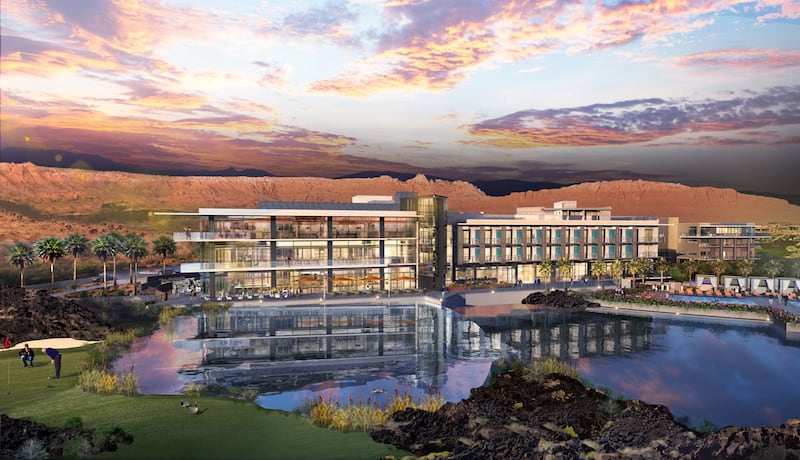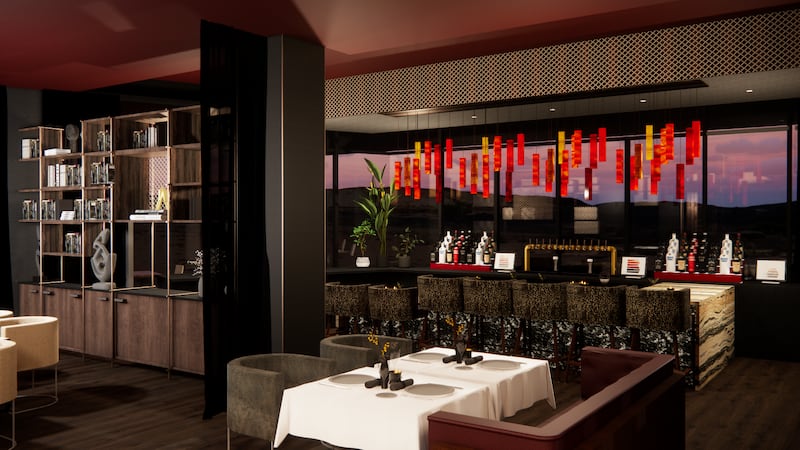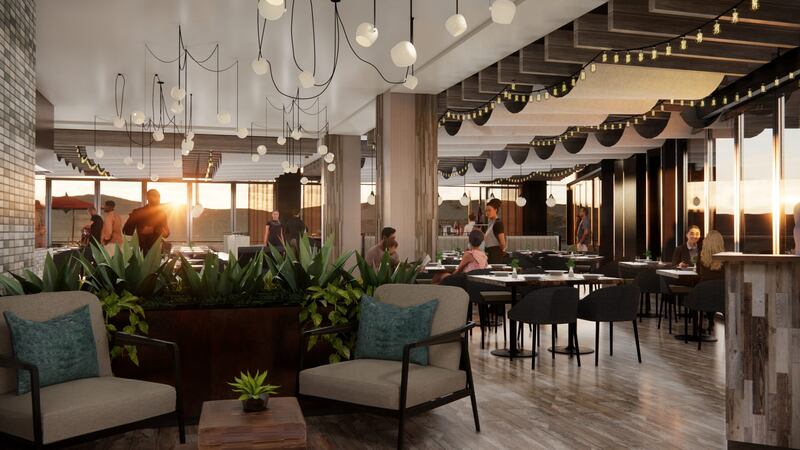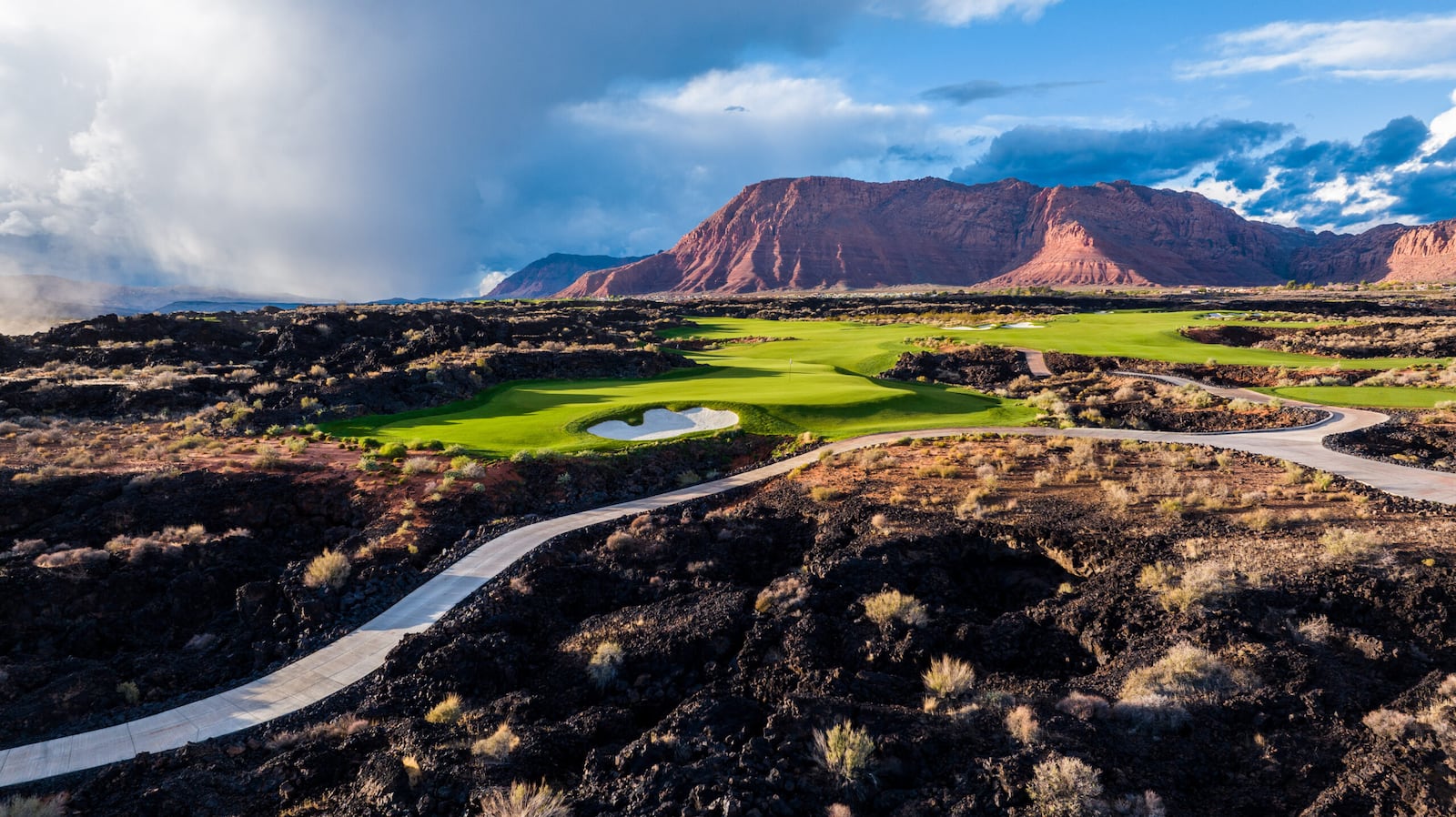This story appears in the May issue of Utah Business. Subscribe.
Black Desert Resort — a hotel slated to open in Ivins, Utah, this fall — is designed to be an ideal vacation destination, complete with pools, restaurants, shopping and a 7,200-yard golf course. It may come as a surprise that the resort is also designed to be a leader in long-term sustainability and conservation practices.
Of the resort’s 600 acres, 300 won’t ever be built on, says Black Desert Resort Managing Partner Patrick Manning. Instead, that land will be preserved so the public can enjoy Utah’s unique lava rock landscape and red rocks while walking on a seven-mile footpath that weaves through the middle of the resort.
Rooting design values in sustainability principles is part of a new and lasting trend to build more responsibly than 50 years ago — back when the world was just starting to understand that humans impact the environment.
“You can’t just be big — you have to do big responsibly,” Manning says, adding that building something the size of Black Desert Resort without intention would have put a strain on traffic patterns, water quality and energy conservation, and limited resources such as parking capacity.

“Being responsible by spending a little more to do it right gives you better alignment with residents to get your project approved,” Manning says. “We’ve built a fan base, if you will, because of that. And if we had just done it normally and not committed to all these things, we wouldn’t have the support we have. It’s easy to say you care. But when you show up and pony up, it proves you care. Caring is how we got all of this done.”
The resort preserves the natural environment by showcasing black lava rocks and sagebrush — pieces of the natural landscape that encourage local birds and animals to build habitats. On the property, it’s common to see coyotes, desert rabbits and reptiles going about their day. Manning says the Utah Division of Wildlife Services will also introduce two varieties of endangered fish into resort lakes.
Sustainability inside and out
At Black Desert, lights automatically turn off when hotel rooms are empty. Instead of running 120 volts of electricity to the 3,000 hotel rooms, key locks and security cameras, the resort only runs 10 volts — lowering the resort’s carbon footprint. Guests can’t see the difference.
The resort also reduces water usage in several ways. Black Desert uses gray water (non-drinking water) on bentgrass, a species of grass that uses less water during the offseason. The golf course will include a maintenance facility to safely store chemicals, wash equipment that cuts grass and filter water for reuse, eliminating the potential of discharging nutrient-rich water. The resort has also built the infrastructure for water reuse lines. When Washington County infrastructure catches up, the resort can connect these water lines to the county and contribute to conservation efforts.
At 75 acres, even the golf course is greener than most. The average golf course has about 95 acres of “managed turf” — including the greens, fairways, tees and rough areas — that receive frequent maintenance treatment. When you reduce the acreage of turf to manage, environmental impact is minimized through the reduction of irrigation water, chemical treatments, labor to maintain the grass, fuel for equipment, and wear and tear on equipment.
“If you care about the residents and the community, you’ll want to do those things at the highest level of responsibility,” Manning says. “It’s a way to honor the residents and the state.”

Gaining industry attention
Because of these environmentally conscious and sustainable protocols, Black Desert Resort closed one of the largest single-transaction C-PACE awards in the nation’s history.
Commercial Property Assessed Clean Energy (C-PACE) is a low-cost, long-term financing option available for energy efficiency, water efficiency, renewable energy and resilience projects. Black Desert Resort’s use of $153 million in financing from a federal-state C-PACE program demonstrates a commitment to positively impacting the local community and the environment.
Black Desert is also close to earning a platinum designation from Audubon International’s Signature Sanctuary Certification program. If successful, Black Desert will be one of the first resorts to receive it.
Frank LaVardera, director of environmental programs for golf at Audubon International, says Black Desert was smart about implementing Audubon’s sustainability principles and standards from the beginning. For example, the resort created several water infiltration areas around the course so runoff goes into the ground instead of being released to nearby streams or other water areas. Controlling runoff is important because it helps prevent contamination, and adding these infiltration areas at a later time would have been more time-consuming and difficult.
“We are particular about where runoff goes because we prefer it doesn’t leave the golf course,” LaVardera says. “The resort will also be implementing water quality testing to make sure even the infiltrated water doesn’t have significant contaminants in it.”
When Audubon members follow the designated environmental principles and guidelines, LaVardera says, there’s a good chance those businesses will save money. Many facilities also use the certification in marketing campaigns and are able to present awarded certifications as proof of sustainability values.
“Why would we not want to implement sustainability principles to reduce impacts to the environment?” LaVardera says. “We know better in this day and age.”
Audubon’s Platinum Signature Sanctuary Certification standards are high but doable. Part of the certification requires resorts to create a natural resource management plan detailing almost a dozen key environmental sustainability components, including waste management, wildlife habitat enhancements and environmental monitoring.
“I was amazed at the stuff going on during my [Black Desert Resort] visit in November and at their sincerity around environmental sustainability,” LaVardera says. “I met one of the property owners recently, and he made it clear that this is high up on their agenda — it’s not just eye candy. This is something they take seriously.”
Editor’s note: A previous version of this article incorrectly stated the Black Desert Resort golf course comprised 72,000 yards.


